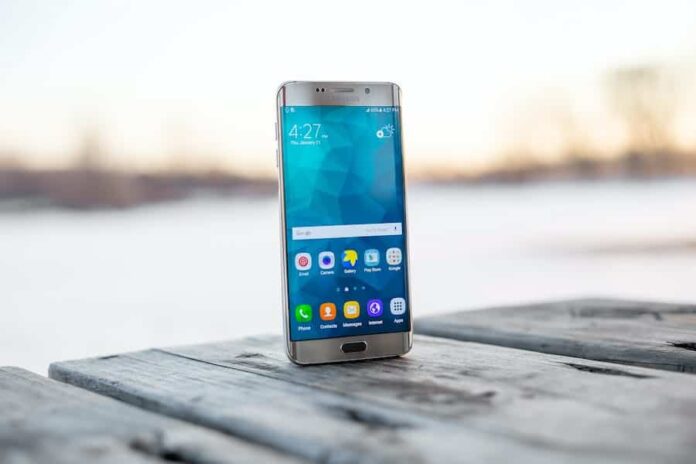The frustration of not being able to move apps to an SD card is a common issue faced by mobile device users worldwide. In this article, we delve into the reasons behind this limitation, aiming to provide clarity and solutions. Understanding the fundamentals of internal and external storage, as well as the intricacies of app installation on Android and iOS, is crucial for making informed decisions about managing device storage. We explore the factors that prevent some apps from being moved to an SD card, such as platform-specific restrictions and app developer choices. By the end of this article, readers will gain insights into how to maximize their device’s storage capacity while ensuring optimal performance and security.
Why Can’t I Move Apps To SD Card?
You can’t always move apps to an SD card due to platform-specific restrictions and app developer decisions. On Android, some apps are locked to internal storage for performance and security reasons. On iOS, Apple’s storage management policies and sandboxing limit app movement. However, there are strategies and third-party tools that can help you overcome these limitations to free up space on your device.
Reasons Why Some Apps Can’t Be Moved To SD Card
Some apps can’t be moved to an SD card due to various reasons:
- App Type Restrictions: Certain system apps and critical components must reside in internal storage for the device to function correctly.
- System-Level Restrictions: Android and iOS impose restrictions on moving apps to SD cards to maintain system stability and security.
- App Developers’ Decisions: Developers may choose to prevent their apps from being moved to external storage to ensure a consistent user experience and avoid potential issues.
These limitations can vary depending on your device’s operating system, but they are designed to balance performance and security considerations.
Advantages And Disadvantages Of Moving Apps To SD Cards
Moving apps to SD cards can have both advantages and disadvantages:
Advantages:
- Storage Expansion: It frees up precious internal storage space, allowing you to install more apps and store more data.
- Performance Improvements: In some cases, apps on SD cards can reduce the burden on internal storage, potentially improving the device’s overall performance.
- Enhanced Device Lifespan: Reduced strain on internal storage can prolong the life of your device by preventing excessive wear and tear.
Disadvantages:
- Compatibility Issues: Some apps may not function properly when moved to an SD card, leading to crashes or errors.
- Security Risks: Apps on external storage can be more vulnerable to malware and data breaches.
- Potential Data Loss: If the SD card fails or is removed, you may lose access to apps and data stored on it.
How Do I Check If An App Can Be Moved To The SD Card?
To check if an app can be moved to the SD card on an Android device, follow these steps:
- Open the “Settings” app on your Android device.
- Scroll down and tap on “Apps” or “Apps & notifications,” depending on your device’s version.
- You’ll see a list of all installed apps. Find the app you want to check and tap on it.
- On the app’s details page, look for the “Storage” or “Storage & cache” section.
- If the option to “Change” or “Move to SD card” is available and not grayed out, you can move the app to the SD card. Tap on that option, and the app will be moved.
Tips To Optimize Storage And Performance
Optimizing storage and performance on your mobile device is essential for maintaining a smooth and efficient user experience. Here are some tips to help you achieve that:
Regularly Clear App Caches:
Clearing app caches can free up storage space and improve app performance. You can do this individually for each app through the app settings or use a cache-cleaning app.
Uninstall Unused Apps:
Delete apps you no longer use to free up both storage space and system resources. Consider periodically reviewing your installed apps and removing the ones you no longer need.
Monitor Storage Usage:
Keep an eye on your device’s storage usage in the settings. Identify which apps or files are consuming the most space and decide whether to remove or transfer them.
Use Adoptable Storage (Android):
If your Android device supports it, consider using adoptable storage. This feature allows you to merge your SD card with internal storage, effectively increasing your device’s internal storage capacity.
Enable Automatic Backups:
Set up automatic backups for your important data, such as photos, videos, and documents, to cloud storage services like Google Drive or iCloud. This ensures your data is safe and can be retrieved if needed.
Manage App Updates:
Configure your device to update apps automatically or manually, based on your preference. Keeping apps up to date can help improve security and performance.
Adjust Display Settings:
Lower screen brightness and screen timeout settings to conserve battery life and reduce the device’s overall power consumption.
Limit Background Processes:
Limit background processes and background app refresh for apps that don’t require real-time updates. This can improve both performance and battery life.
Regularly Restart Your Device:
Restarting your device can clear temporary files and refresh system resources, potentially improving performance.
Use Lite Versions Of Apps:
Consider using lite versions of apps whenever available. These versions are designed to be more resource-efficient and consume less storage space.
Final Word
Efficiently managing storage and optimizing performance on your mobile device is crucial for a seamless user experience. Regularly clearing app caches, uninstalling unused apps, and monitoring storage usage are essential steps. Additionally, adjusting settings, limiting background processes, and considering external storage options can significantly enhance your device’s functionality. By adopting these practices and staying mindful of your device’s storage needs, you can enjoy a faster, more responsive, and clutter-free mobile experience while ensuring that you make the most of your device’s capabilities.
FAQ’s
Can I Move All Apps To The SD Card?
No, not all apps can be moved to the SD card. Some apps, especially system apps, must remain on internal storage for the device to function correctly.
How Do I Check If An App Can Be Moved To The SD Card On Android?
Go to “Settings” > “Apps” > select the app > check the “Storage” section. If the “Move to SD card” option is available, you can move the app.
Will Moving Apps To The SD Card Improve Performance?
It might improve performance in some cases, but not always. The impact on performance varies depending on the app and the device’s hardware.
Are There Any Risks Associated With Moving Apps To The SD Card?
Yes, there can be compatibility issues, and some apps may not function correctly when moved to external storage.
How Can I Optimize Storage On My Device?
You can optimize storage by clearing app caches, uninstalling unused apps, monitoring storage usage, and using external storage options like SD cards or cloud storage.





